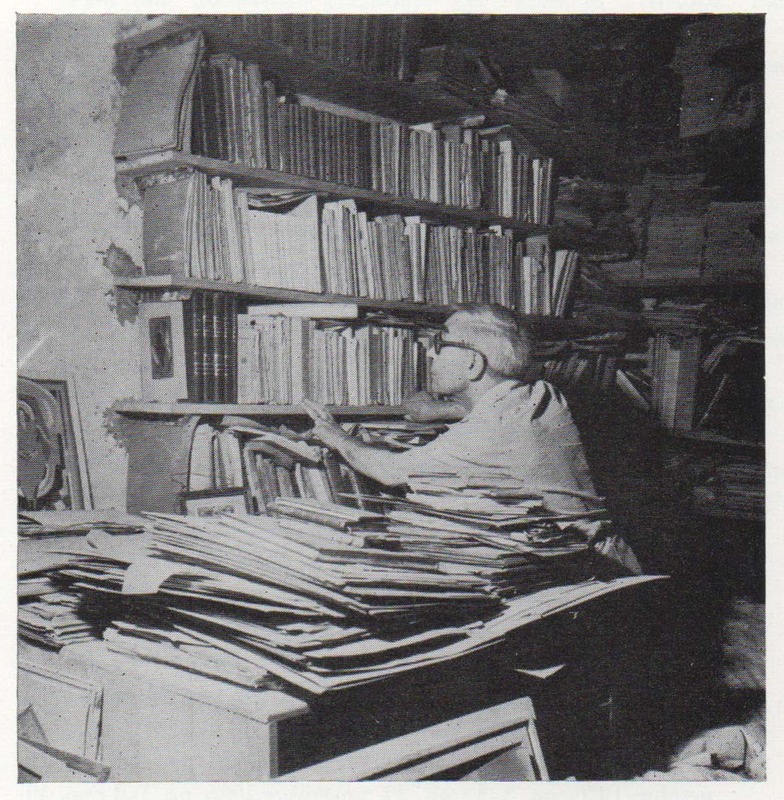Go Back to General introduction
Back to Form and History index
Texts by Gleizes
(translations by Peter Brooke, unless otherwise stated)

The Problem of Light
Gleizes, writing in 1935 at the time when he felt he had seized the fulness of the possibilities opened up by Cubism (see below, Albert Gleizes in 1934), relates the painters' preoccupation with light to the debates in contemporary physics concerning the best way of conceiving it, in terms of particles or in terms of waves.
Albert Gleizes and Jean Metzinger: Du "Cubisme"
a previously unpublished English translation together with an anthology of related texts from Gleizes and Metzinger on pre-war Cubism and an extensive historical introduction.
Painting, and Man become Painter
Gleizes's last book-length text, written in 1948, the summary of a lifetime's research on form and colour
The Epic: From Immobile Form to Mobile Form
A brief history of Cubism to 1925, stressing its nature as a collective and not a merely individual, adventure. Normally seen as the last period of Cubism, Gleizes sees the 1920s as the moment when, after many struggles, the movement had finally reached the starting point from which a great, popular, 'decorative' painting would be possible.
With illustrations taken from the Bauhaus book Kubismus, illustrating the three stages of Cubism - volume, multiple perspective, respect for the flat surface - Gleizes's schema is vastly more useful for understanding Cubism than the old 'analytical-synthetic' model.
Spirituality, Rhythm, Form
Gleizes saw the history of human culture in terms of alternating cycles: 'rhythmic' cycles, in which Man is active at all the levels of his being - 'from the reality of the senses to the reality of the spirit'; 'spatial' periods, such as our own, in which he is reduced to being little more than a passive observer of the world about him. The disturbances which shook the arts at the beginning of the twentieth century - in particular, Cubism - are interpreted as signs that a spatial period, whose high point was the Renaissance, is beginning to give way to a new rhythmic period.
Albert Gleizes in 1934
1934 was a key year in Gleizes' development, when he felt that he had finally understood the end to which Cubism had been striving - a painting at once static and mobile, the conjugation of the two giving rise to unified form. This pamphlet gives extracts from his Souvenirs on the practical implications of what he had discovered, together with a letter, written at the time, to his pupil, the Australian potter, Anne Dangar.
'Key Words'
Discussion of the meaning of words such as 'absolute' and 'relative', 'cause' and 'effect', 'space' and 'time', 'object' and 'subject'. In discussing the relationship between the worker (a painter for example) and the work (a painting for example) Gleizes indicates a philosophy of what work ought to be. Complementary to 'Albert Gleizes in 1934'.
The following are texts waiting to be transferred to this site but they can be seen on the old .org.uk site here
Gleizes on Picasso and Braque - an anthology
A selection from different writings over forty years in which Gleizes discusses, sometimes more positively, sometimes more negatively, the distinctive contribution of Picasso and Braque to the Cubist tradition.
Painting and Representational Perspective
Written in 1927, this essay begins with a powerful evocation of Cézanne seen struggling between two fundamentally different approaches to painting - the imitation of external appearances in a fictitious third dimension and the seizure of the plastic/spiritual nature of the picture plane in its real two-dimensional nature. Argues that Cubism retraced in reverse the course of the Renaissance, from Cimabue to Uccello.
Cubism and the General Culture
Essay written in the context of the exhibition L'Art d'Aujourd'hui at the end of 1925, the first serious attempt in Paris to show the development of non-representational painting throughout the world. Gleizes argues that painting is not the peculiar activity of eccentric individuals but that it reflects the same concerns as other areas of the general culture that surrounds it.